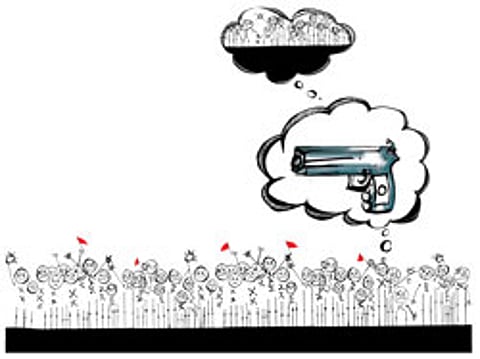The riot of red flags
India's Naxalite movement – to which contemporary Indian Maoists directly trace their lineage – emerged as a wildfire insurrection in 1967 in the Naxalbari area of North Bengal. After a few years of dramatic violence, however, that movement was comprehensively suppressed by 1973, with the entire top leadership of what was then the Communist Party of India (Marxist-Leninist), either jailed or dead. What little remained of its splintered survivor organisations was destroyed during Indira Gandhi's Emergency of 1975. It was with the formation in 1980 of the People's War Group (PWG) – under the leadership of Kondapalli Seetharamaiah, an erstwhile Central Organising Committee member of the CPI (ML), in the Telengana region of Andhra Pradesh – and the reorganisation of the Maoist Communist Centre (MCC) in Bihar in the mid-1980s, that the movement resurfaced in some strength.
Initial successes were, again, rapid, and by the mid-1980s, 31 districts in seven states were experiencing Naxalite violence. By the early 1990s, however, the problem had been eliminated from at least 16 of these districts, bringing the total number of affected districts to just 15 in four states. Thereafter, the reconstruction of the Naxalites was initially more systematic, with wider areas being targeted and consolidated. In recent years, however, the growth of the movement has been exponential. Thus, at the meeting of what is known as the Central Coordination Committee of states affected by the Naxalite movement, on 21 November 2003, then-Union Home Secretary N Gopalaswami disclosed that a total of 55 districts in nine states were affected by varying degrees of Naxalite violence. Just ten months later, on 21 September 2004, an official note circulated at the meeting of chief ministers of states experiencing Naxalite violence, indicating that this number had gone up to as many as 156 districts in 13 states. By August 2007, the official number had risen to 194 districts in 18 states.

